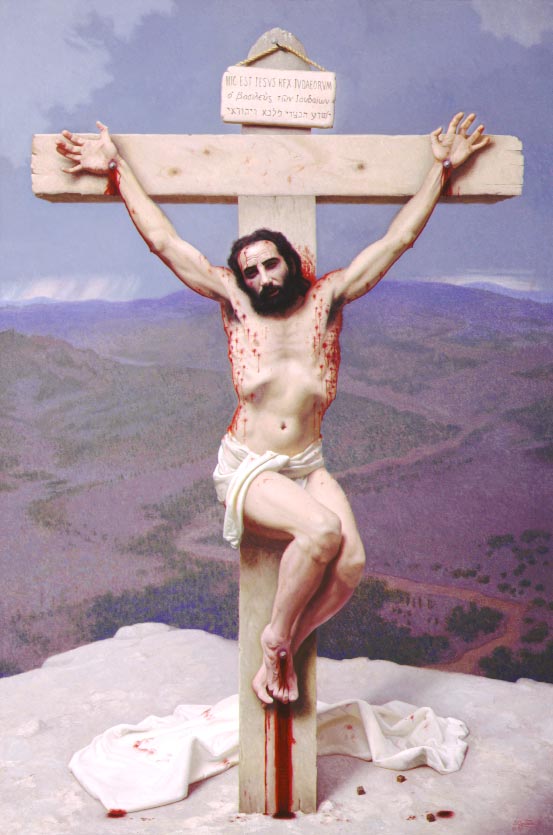|
|

|
Image
© Stephen Gjertson
Scan © Gandy Gallery |
| I rejected some of the mysticism and idealism inherent in much Italian and French art in favor of a more literal representation closer to that of some German artists, such as Mathis Grunewald. The image went through several stages as I developed my drawings in consultation with the Ramsey County Medical Examiner in Saint Paul, an expert on medical aspects of the crucifixion. As a matter of taste, I chose to suggest, rather than to portray literally, the actual physical horror of the event, since the body of Christ was most likely disfigured beyond recognition. The work's basic intention is confrontational rather than devotional. Instead of looking up to the Father, Christ looks out at the viewer, demanding a response. I tried to avoid the conventional, prettified, Western Jesus in favor of a more truthful, Semitic Savior, who was described by the prophet Isaiah with the words: "He has no form or comeliness; and when we see Him, there is no beauty that we should desire Him." Isaiah 53:2. I designed the tabernacle frame to celebrate Christ's resurrection from the dead. The entire work; therefore, portrays a more complete idea of the atonement, including the fact that Christ was raised for the justification of believers. Wheat is a symbol Christ used when alluding to His resurrection. The lion's head symbolizes His lordship as the Lion of the tribe of Judah. The Alpha and Omega represent Him as the First and the Last, the Originating Cause of the world and the One who brings to completion at the end of the age. |